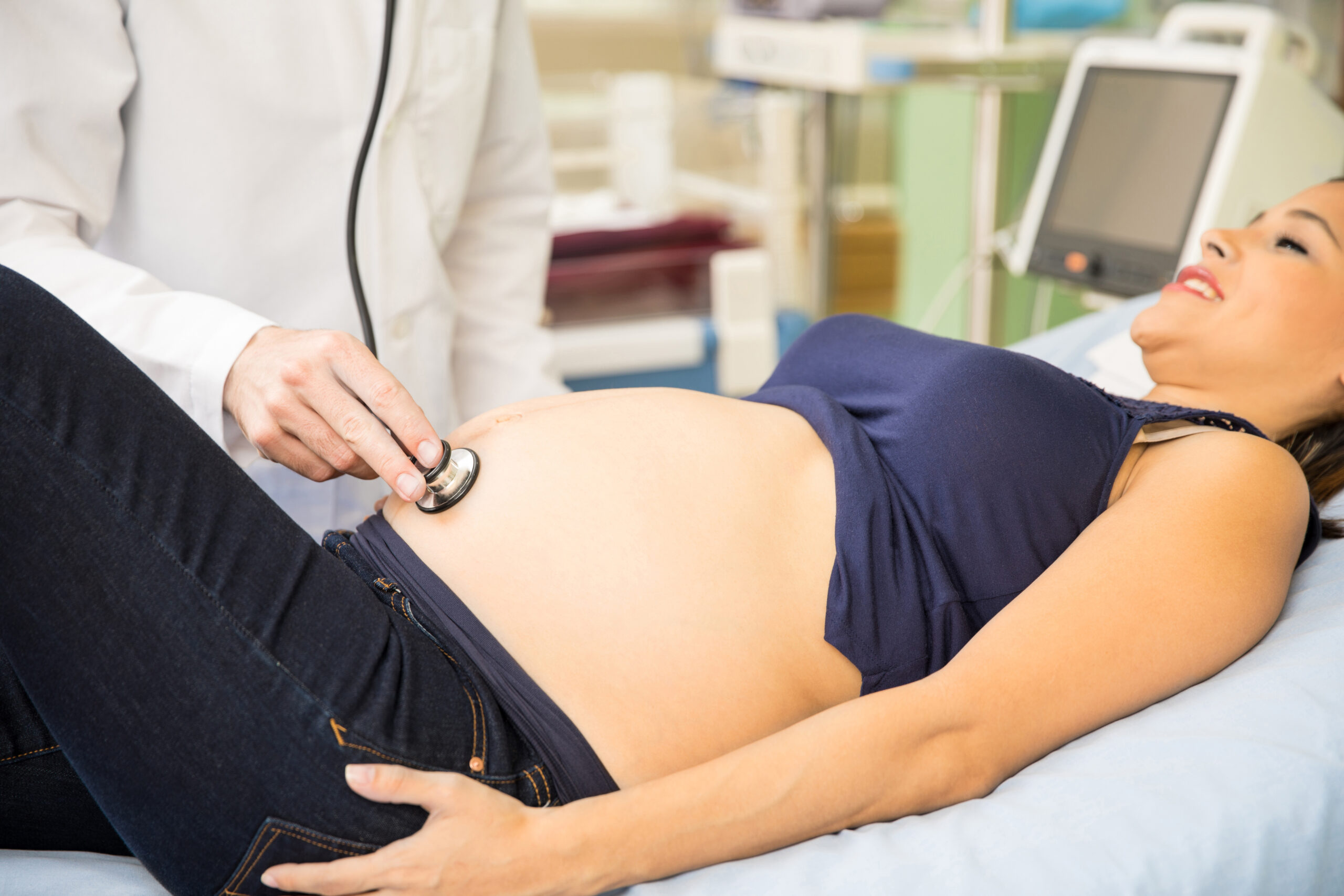Preeclampsia Pregnancy Complications
Preeclampsia pregnancy complications at a glance
- Preeclampsia is a complication in about 4% of pregnancies in the United States involving high blood pressure that can seriously affect the health and lives of the mother and baby.
- It restricts the delivery of oxygen and nutrients to the fetus by the placenta, which can affect fetal growth and lead to complications for the baby as well as for the mother including placental abruption, seizures, stroke and organ failure.
- Risk factors include obesity, first-time pregnancy, young or advanced maternal age, multiple gestation (twins or more), and pre-existing conditions such as diabetes and high blood pressure. Preeclampsia in a prior pregnancy also increases the risk.
- Delivery of the child and the placenta is the only real cure, and OB/GYNs often recommend labor induction to reduce health risks to mother and child.
- Preeclampsia can affect future fertility, with the extent of that effect related to how severe the condition is and whether any permanent organ damage occurred in the mother.
What is preeclampsia?
Preeclampsia is a serious pregnancy complication in which the mother experiences high blood pressure. It usually appears after 20 weeks of pregnancy in mothers who did not previously have high blood pressure.
The March of Dimes reports that this condition occurs in about 4% of pregnancies in the U.S. According to the National Library of Medicine, preeclampsia is the cause of about 16% of maternal deaths in high-income countries like the U.S. It is also a major cause of premature birth and infant deaths worldwide.
The condition restricts the placenta’s ability to deliver oxygen, blood and nutrients to the fetus, which can affect fetal growth and other health issues in the child. If left untreated, the mother can experience serious complications like placental abruption, eclampsia (seizures), stroke and organ failure.
Timely diagnosis and monitoring are crucial in preventing or limiting the damage from preeclampsia for mother and child. This is particularly true as the incidence of the condition in the U.S. has increased 25% in the last two decades and is a leading cause of death and illness for infants and mothers, according to the Preeclampsia Foundation.
Eclampsia
Preeclampsia (also known as pre-eclampsia) takes its name from the condition of eclampsia, which is when a woman experiences one or more seizures during pregnancy or postpartum. It was first thought that preeclampsia was a disorder that preceded cases of eclampsia.
Eclampsia seizures are now recognized as one complication from preeclampsia. Eclampsia does not occur often in developed countries due to advanced prenatal care and pregnancy monitoring.
Postpartum preeclampsia
This is developing preeclampsia after delivery. It is a rare condition, affecting only about 5% of women with preeclampsia. New mothers experience postpartum preeclampsia usually within the first 4-6 weeks postpartum.
Symptoms are the same as for preeclampsia prior to the postpartum period.
Need help with your pregnancy plans?
We offer women preconception testing, as well as genetic screening, for the most informed decision making and peace of mind.
Preconception testing benefits
What causes preeclampsia?
Preeclampsia is believed to begin in the placenta early in pregnancy when blood vessels develop to supply oxygen, blood and nutrients to the placenta for delivery to the fetus. In women with the condition, these blood vessels do not function properly, creating problems with blood flow to the placenta. This can lead to poor blood pressure in the mother, when she did not have that prior to pregnancy.
Other conditions related to high blood pressure during pregnancy are chronic hypertension, chronic hypertension with superimposed preeclampsia, and gestational hypertension, all of which lack the more severe complications of preeclampsia.
Risk factors for having the condition
Some factors (noted below) increase a woman’s risk of developing preeclampsia. There is also evidence that a lack of access to prenatal care as well as poor socioeconomic conditions increase risk to women’s health in general. Factors that bring a high risk for preeclampsia include:
- Having a multiple pregnancy (twins or more).
- Prior diagnosis with a previous pregnancy.
- Chronic high blood pressure to begin with.
- Diabetes (types 1 or 2), autoimmune diseases or kidney disease.
- In vitro fertilization (IVF) treatment with fresh embryo transfer or with hormone-replacement frozen embryo transfer protocols.
Other risk factors for preeclampsia include obesity, being over age 35 or under age 20 at pregnancy, previous pregnancy complications, and a first pregnancy with the current child’s father.
Preventing preeclampsia
If a pregnant woman has a high-risk factor or multiple risk factors, her healthcare provider may recommend low dose aspirin (81mg) daily beginning at week 12 of the pregnancy. Being as healthy as possible before pregnancy can help prevent the condition in women susceptible to it.
This includes managing conditions like diabetes and existing high blood pressure. As is the case in any pregnancy, women at risk for preeclampsia should consult with their provider about taking medications, supplements and vitamins.
Complications for mother and child
Preeclampsia complications can affect the baby, mother or both.
Complications that affect the baby only
- Preterm birth, which can lead to developmental delays, cerebral palsy, and problems with feeding, breathing, hearing and vision. Delivering the baby early is also a way to stop preeclampsia.
- Restricted fetal growth occurs due to restricted blood flow to the placenta that can result in lower delivery of blood, oxygen and nutrients to the fetus.
Complications affecting the mother and baby
- High liver enzymes and low platelet count, which affects several organs and can endanger the lives of the baby and the mother and can result in continued health problems for the mother after delivery.
- Placental abruption, in which the placenta detaches from the uterine wall before delivery. Placental abruption can be severe with heavy bleeding and threaten the lives of both mom and baby.
Complications that only affect the mother
- Eclampsia is seizures along with signs of preeclampsia. This can have no warning signs and can occur prior to, during or after delivery.
- Cardiovascular disease can become a higher risk for the mother, particularly if she has had preeclampsia before or had a previous preterm birth.
- Damage to organs: lungs, eyes, heart, liver or kidneys. The severity of the preeclampsia case affects the severity of such organ damage.
Related Reading: Progesterone and Pregnancy
Preeclampsia symptoms, diagnosis & treatment
High blood pressure is the most obvious symptom, which is often noted in prenatal monitoring. Some women show no symptoms at first. Following are possible preeclampsia symptoms:
- High blood pressure (140/90 or higher) after 20 weeks of pregnancy.
- Signs of damage to the kidneys or other organs.
- Protein in the urine, called proteinuria.
- Bad, prolonged headaches that don’t respond to medication.
- Blurred vision, light sensitivity and temporary vision loss.
- Decreased blood platelet levels.
- Pain in the upper abdomen.
- Nausea or vomiting.
- Decreased urine output.
- Shortness of breath.
- Sudden weight gain over 1-2 days and sudden swelling in the face and hands.
Pregnant women should seek care immediately if they experience severe abdominal pain, severe headaches, shortness of breath or vision disturbance.
Diagnosis
Some of the above are symptoms present during any pregnancy. Prenatal visits are important so a woman’s OB/GYN can spot troublesome signs early.
Identifying the symptoms above is the primary way doctors diagnose the condition. Other steps for a definitive diagnosis include blood work, urine analysis, normal fetal ultrasound, and ultrasound to evaluate the baby’s heart activity, breathing and other physical issues.
Preeclampsia treatment
Delivering the child is the only way to end preeclampsia. This also removes the placenta, which causes the condition. Delivery from 34-37 weeks may be recommended to prevent worsening of the condition. C-section is an option for severe conditions, particularly after 37 weeks.
Another form of treatment is monitoring the condition through the tests mentioned above and taking steps to manage the existing symptoms. This can include medications to reduce blood pressure and to prevent eclampsia seizures. Restricting the woman’s movement can also help. Severe cases can require additional hospitalization.
Can this condition cause infertility?
Though most women who have had preeclampsia do have successful pregnancies afterward, the condition may cause or contribute to infertility. The impact on fertility depends on the severity of the condition and possible organ damage resulting from it.
- Premature delivery is associated with higher risks of future fertility problems.
- The condition can cause retained placental tissue that can lead to uterine tissue accumulation that impedes fertility.
- Severe cases can result in placental abruption, mentioned above, or intrauterine growth restriction that damage the uterus and increases the risk of secondary infertility.
- In rare cases when organs are damaged, this can also affect a woman’s fertility.
- The fertility impact depends on the severity of the preeclampsia and whether any permanent organ damage occurred. Early treatment is important to reduce risks.
Open communication between a woman and her OB/GYN, as well as alerting a fertility specialist if the woman has previously experienced preeclampsia, are crucial steps in ensuring early detection, proactive management and optimal outcomes for future fertility.


